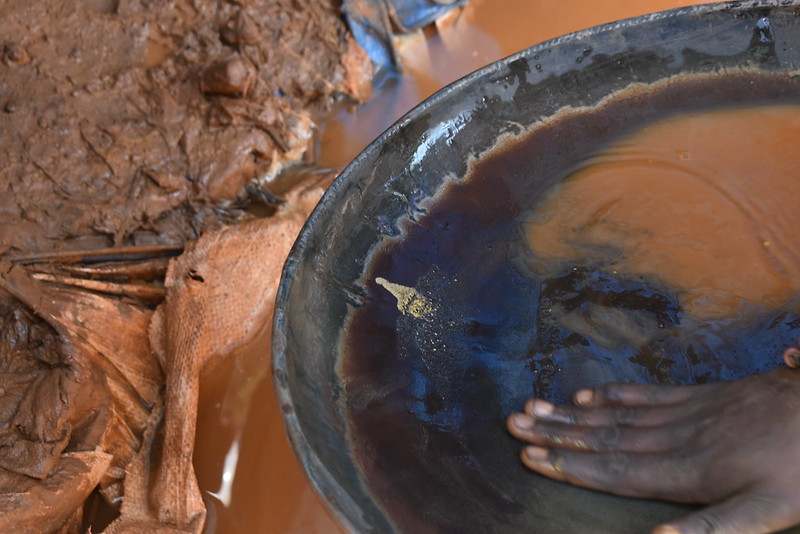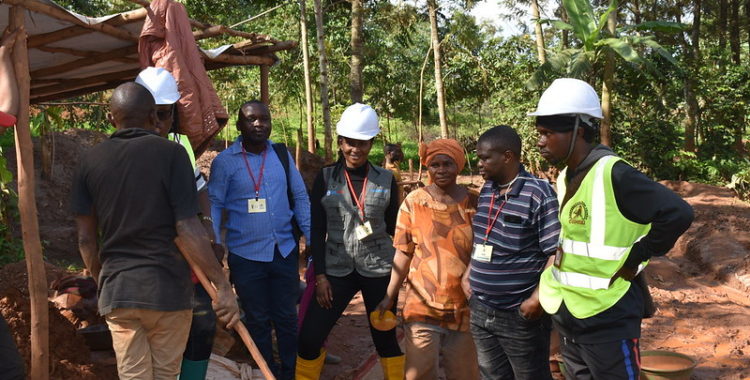A recent in-depth analysis of the logistics functions of the DRC ASM gold supply chain, carried out as part of the USAID Commercially Viable Conflict-Free Gold project, also known locally as “Zahabu Safi”, helped the consortium identify next steps for contributing to the formalization of logistics solutions in eastern DRC.
Since the beginning of the project, the consortium has spent a lot of time identifying mine sites to partner with. This work has accelerated in the last 6 months, with the help of the consortium’s new due diligence and traceability partners, Better Chain and RCS Global. In that time period, we’ve also been talking in detail to refiners and jewelers as we start to build potential supply chains to facilitate the export of responsible gold from eastern DRC.
Our 2019 market analysis demonstrated that downstream actors are particularly concerned that product controls and movements not only meet internationally acceptable due diligence standards, but are also commercially viable. In light of this finding we have done further analysis to understand the barriers identified in the market study and to work out how they can be managed.
Our key findings: informality is a barrier
The research underscores that there is an existing and functioning system of logistics operating in the DRC, which moves large amounts of gold out of the country on a daily basis. It is mostly informal, however, using illicit channels and based on relationships of trust rather than legal contract.
Other key findings include:
- Refiners are used to – and most comfortable - working with formal logistics solutions. But almost all existing solutions in the DRC are informal and the cost of establishing formal services would be prohibitively high. The CVCFG project will need to bridge this gap.
- There are currently few incentives for what would be considered traditional, formal logistics service providers in banking, insurance, transport, and security to enter this market.
- Owing to this informality, there is a higher risk of corruption, including illegal taxation and bribery from government officials and military and illegal armed groups. Despite this, the cost of informality is offset many times over by avoiding the high levels of taxation associated with operating in the formal sector.
- National and local bureaucracy makes legal/formal export processes slow, further encouraging the use of more informal and flexible methods.
Therefore, we concluded that completely superseding this system or creating a parallel system for trade and logistics (e.g. through a formal, international service provider) would be cost- and resource-intensive, and most likely unsustainable. Instead, we should work with these systems to provide pathways towards more transparent, formal and secure business practices.

Next steps: recommendations for a successful logistics rethink
Based on the findings of our logistics analysis and our expertise in responsible minerals supply chains, we recommend the Zahabu Safi project adopts the following three steps to develop a commercially-viable gold supply chain from eastern DRC:
- Explore ways to work with existing actors and aim at increasing transparency and formality through targeted interventions at specific points in pre-existing supply chains.
- Aim to increase transparency and reduce secrecy in the sector, including through improved due diligence on and by supply chain actors and encouraging the involvement of formal financial institutions in the payment system.
- The Corrective Action Plan process (usually used to measure processes at the mine site against international standards) should be used along the whole upstream supply chain, not only to support the mining cooperatives.
In practical terms, this mean that the project should:
- Work with existing supply chain actors to create a network of vetted parties providing logistics services since structural barriers in the upstream gold supply chain render the establishment of a comprehensive, formal logistics solution within the timeframe of the project impracticable.
- Seek to explore and facilitate small logistics infrastructure improvements, making use of the Responsible Gold Innovation Fund (RGIF) where appropriate. These improvements need to include secure storage, reliable and certifiable assay solutions, provision of insurance, and mobile banking (allowing the tracking of money transfer).
- Work closely with public authorities to overcome structural governance issues impacting on logistics, such as bribery and illegal taxation, fiscal disincentives, and administrative burden and delays prescribed within the regulatory framework.
Based on this blueprint, the consortium will work with local stakeholders to develop practical logistics solutions in eastern DRC. Please get in touch with our researchers, if you would like to be involved in this next phase of work, or look out for the future developments by signing up to the Zahabu Safi (CVCFG) newsletter.
Zahabu Safi (The Commercially Viable Conflict-Free Gold Project – CVCFG) is an economic development initiative of the United States Agency for International Development (USAID) in the Democratic Republic of the Congo (DRC). The goal of the project is to establish a conflict-free artisanal and small-scale mining (ASM) gold supply chain originating from eastern DRC. The five-year, $11.9 million program builds on recent successes achieved by donor-funded initiatives to export responsibly-produced gold to jewelry buyers in North America and Europe.
The program is being implemented by Global Communities in partnership with Levin Sources, Better Chain and RCS Global Upstream Ltd.



